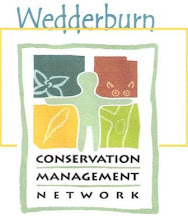
“Nature Notes” For April and May - L and A
During the months of April and May bird sightings have been predominant, mostly due to emerging food sources for local birds. Almost bare paddocks have been visited by flocks of red-rumped parrots seen feeding on the ground while the sound and sight of very large flocks of corellas are noticeable in the early mornings. Eucalypts that are currently in flower are attracting the noisy flocks of brilliant green and red musk lorikeets and another brightly coloured bird, the male red capped robin, has been sighted recently. His brilliant red forehead and chest contrasting with a white front and black back draws attention to his movements in spite of his small size. The chattering of restless flycatchers and their incessant activity makes these scenes most entertaining to observe.
A few pairs of southern white face have been observed feeding on grass seeds, decreased numbers of these birds have been seen in recent months. Wedge-tailed eagles have also been sighted feeding on animal carcasses such as dead sheep in paddocks and dead wallabies in the bush.
On one of our walks we encountered a young stumpy-tailed lizard, about half grown, basking in the sun under a low bush, it responded to our disturbance with an impressive threat display. Mistletoe in large volumes on trees at the edge of the forest has been changing colour, the leaves turning to a rusty red. Ruby Salt bush at this time of year has abundant red fruit ( sometimes orange or yellow). After the rain there has been a proliferation in growth of twining fringe lilies now beginning to look like a thick piece of green cotton reaching up to climb onto whatever they can.Young quandong trees have also been showing healthy growth in recent months in spite of the drought, but many will be eaten off by kangaroos and wallabies before they can grow much higher. Unfortunately scratched and disturbed areas of soil are indicating an increasing amount of rabbit activity in the native vegetation. There are lots to observe in our focus area.
During the months of April and May bird sightings have been predominant, mostly due to emerging food sources for local birds. Almost bare paddocks have been visited by flocks of red-rumped parrots seen feeding on the ground while the sound and sight of very large flocks of corellas are noticeable in the early mornings. Eucalypts that are currently in flower are attracting the noisy flocks of brilliant green and red musk lorikeets and another brightly coloured bird, the male red capped robin, has been sighted recently. His brilliant red forehead and chest contrasting with a white front and black back draws attention to his movements in spite of his small size. The chattering of restless flycatchers and their incessant activity makes these scenes most entertaining to observe.
A few pairs of southern white face have been observed feeding on grass seeds, decreased numbers of these birds have been seen in recent months. Wedge-tailed eagles have also been sighted feeding on animal carcasses such as dead sheep in paddocks and dead wallabies in the bush.
On one of our walks we encountered a young stumpy-tailed lizard, about half grown, basking in the sun under a low bush, it responded to our disturbance with an impressive threat display. Mistletoe in large volumes on trees at the edge of the forest has been changing colour, the leaves turning to a rusty red. Ruby Salt bush at this time of year has abundant red fruit ( sometimes orange or yellow). After the rain there has been a proliferation in growth of twining fringe lilies now beginning to look like a thick piece of green cotton reaching up to climb onto whatever they can.Young quandong trees have also been showing healthy growth in recent months in spite of the drought, but many will be eaten off by kangaroos and wallabies before they can grow much higher. Unfortunately scratched and disturbed areas of soil are indicating an increasing amount of rabbit activity in the native vegetation. There are lots to observe in our focus area.
Photograph by Lynton Schreiver of a tree goanna.

No comments:
Post a Comment